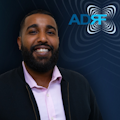First Responders Need Converged Networks
Unlocking the Potential of Converged Wireless Networks that Support Smartphones and Land Mobile Radios (LMRs)
Historically, land mobile radios (LMRs) have been utilized by various industries, including Law Enforcement, Fire and EMS, and Utilities, for both commercial and public safety purposes. Originally offering enhanced data transmission, location tracking, connectivity, and interoperability with existing technologies, the LMRs played a crucial role in providing reliable and instant communication in challenging environments. More recently, LMR systems have undergone upgrades to improve reliability and integration with other systems, but in the new age of technology, smartphones and other personal devices have started to emerge as the primary method of communication for these professionals.
The 2022 Verizon Public Safety Communications Survey revealed that smartphones have now surpassed LMRs as the primary form of communication, with 72 percent of first responders using their devices for work every day compared to 68 percent for LMRs—highlighting the growing relevance of smartphones in the public safety market. The survey also outlined that 92 percent of first responders say that smartphones are essential daily communication tools, and that’s unlikely to change. It was also noted that LMR usage is expected to decline. Despite this increasing usage and preference of smartphones by first responders, traditional LMRs remain to be the approved communication method by Authorities having Jurisdictions (AHJs).
Considering the ongoing transformation in public safety measures, it is crucial for AHJs, which consists of an organization, office, or individual responsible for enforcing the requirements of a code, to proactively consider the integration of converged public safety and cellular systems, allowing for enhanced communication efficiency and cost-effective solutions, benefiting building owners by providing comprehensive wireless coverage.
Changing the Emergency Landscape
Despite the enduring usage and reliance on LMRs and public safety systems operating within their designated frequency bands, recent findings by the Federal Communications Commission (FCC) indicate that over 80 percent of 9-1-1 calls originate from cell phones, with 65 percent of these calls occurring within buildings. This underscores the fact that most incidents are initially reported by the general public rather than first responders themselves such as police officers, Emergency Medical Technicians (EMTs), or firefighters. Due to this, we believe that it is the general public who function as the true "first responders" in these situations, being the first to witness an event and make the crucial call for help. Ensuring effective communication for everyone during emergencies necessitates support for both public safety and commercial frequencies. This is precisely where converged wireless solutions can play a pivotal role by incentivizing building owners to invest in comprehensive communication infrastructure.
Converged wireless solutions involve the integration of emergency responder communication enhancement systems (ERCES) and cellular wireless systems within the same enclosures or architectures creating an increased accommodation for smartphone users. This convergence presents a significant benefit for improving public safety communication in addition to multiple advantages for building owners. For example, it reduces costs associated with wiring and additional passive components when installing both public safety and cellular systems. This cost-saving potential is especially significant in large-scale buildings where expenses are further amplified.
While building owners are required to install an ERCES to obtain a certification of occupancy, the installation of additional in-building commercial systems is often optional. Due to the high deployment and installation costs, business owners tend to delay or forego the addition of such systems until it becomes absolutely necessary. Converged wireless solutions can help overcome these challenges by offering cost savings and incentivizing the upfront installation of cellular systems for customers. This improves the efficiency and performance of the network, optimizing resources to meet the needs of both first responders and citizens.
No Standards?
Despite these benefits, the limited adoption of converged ERCES is due to the reluctance of AHJs granting permission due to historical norms.
AHJs hold the crucial responsibility of interpreting and enforcing model codes from the National Fire Protection Association (NFPA) and the International Fire Code (IFC). However, until recently, there was a lack of clear language regarding the acceptance or denial of shared systems in this manner. Understandably, AHJs are constantly faced with the challenge of allowing something without a precedent.
The publication of National Fire Protection Association 1225 on September 15, 2021, marked a significant development in addressing the integration of shared systems. Section 18.6 of NFPA 1225 introduced language specifying the requirements for systems sharing infrastructure with public safety services. According to this new language, shared systems must ensure that coverage and performance remain uncompromised, regardless of the volume of traffic, and must meet the same rigorous testing standards as public safety systems. Despite the progress in language and personal device usage, many AHJs continue to exhibit reluctance in embracing the transition to converged systems. Thankfully, at the time of publication, forward-thinking jurisdictions such as Orange County, Pinellas County, and Martin County, in Florida, have accepted and adopted converged wireless solutions.
In light of the evolving landscape of public safety communication with the increased usage of personal smart devices in the field, AHJs should adapt their perspective to embrace the convergence of traditional public safety and cellular systems. When cellular systems meet the same testing requirements as mandated by National Fire Protection Association 1225, improved indoor communication during emergency situations becomes possible. By embracing this shift, we can ensure seamless connectivity when it matters most.
About the Author
Mohammed Ali
Manager of DAS Engineering, ADRF
Mohammed Ali is the Manager of DAS Engineering at ADRF, responsible for leading the DAS engineering division within the company across all global accounts. He has more than 10 years of experience in in-building DAS engineering and wireless network planning. Prior to joining ADRF, Mohammed worked as an RF Engineer at TeleworX and Huawei Technologies Sudan and a Network Management Engineer at ZAIN Sudan.
For more information, email [email protected] or visit https://adrftech.com/. Follow Mohammed on Twitter @MALI_ADRF. Follow ADRF on Twitter @ADRFTECH and LinkedIn: https://www.linkedin.com/company/advanced-rf-technologies-inc/.

